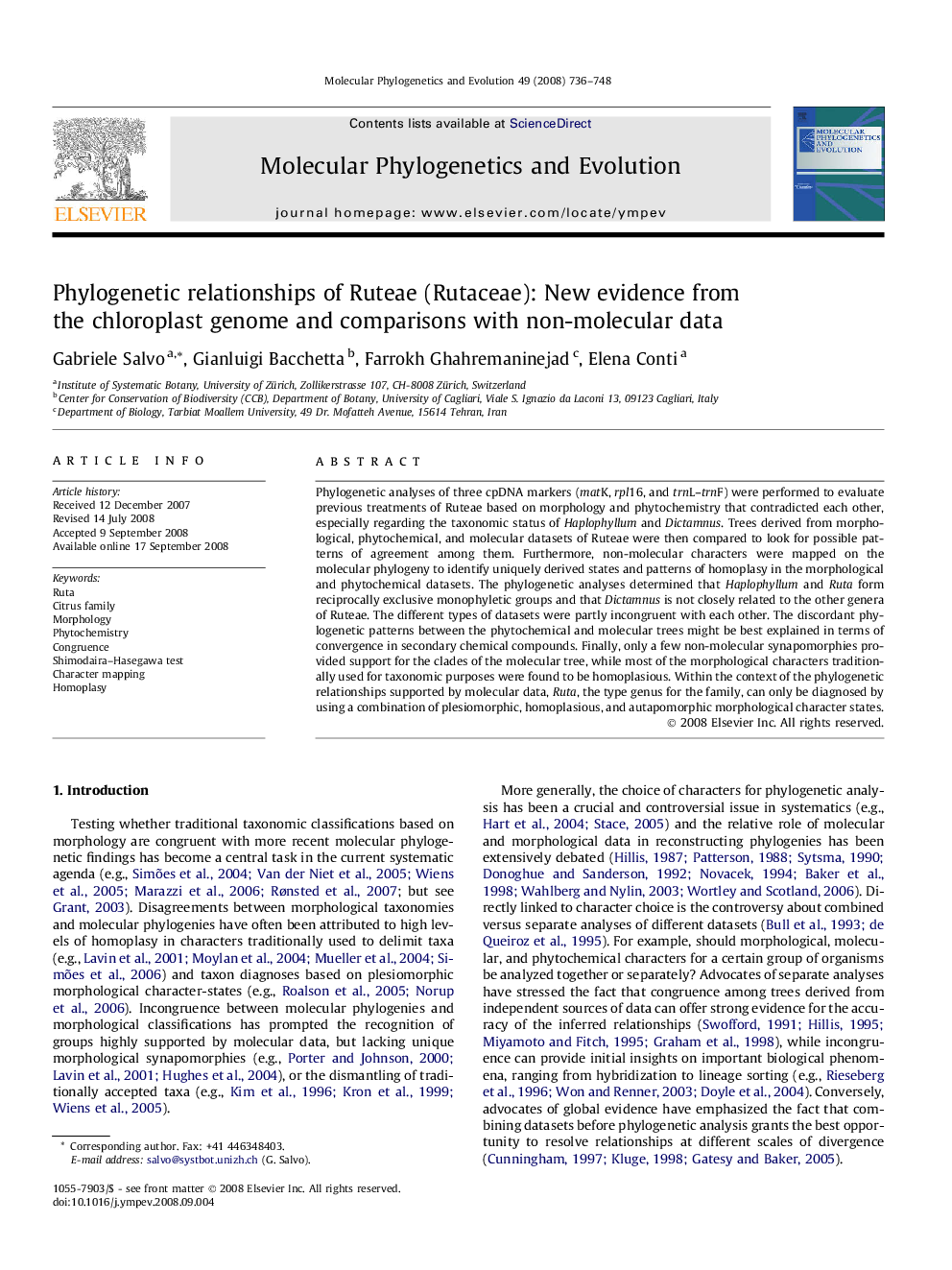| کد مقاله | کد نشریه | سال انتشار | مقاله انگلیسی | نسخه تمام متن |
|---|---|---|---|---|
| 2834992 | 1164330 | 2008 | 13 صفحه PDF | دانلود رایگان |

Phylogenetic analyses of three cpDNA markers (matK, rpl16, and trnL–trnF) were performed to evaluate previous treatments of Ruteae based on morphology and phytochemistry that contradicted each other, especially regarding the taxonomic status of Haplophyllum and Dictamnus. Trees derived from morphological, phytochemical, and molecular datasets of Ruteae were then compared to look for possible patterns of agreement among them. Furthermore, non-molecular characters were mapped on the molecular phylogeny to identify uniquely derived states and patterns of homoplasy in the morphological and phytochemical datasets. The phylogenetic analyses determined that Haplophyllum and Ruta form reciprocally exclusive monophyletic groups and that Dictamnus is not closely related to the other genera of Ruteae. The different types of datasets were partly incongruent with each other. The discordant phylogenetic patterns between the phytochemical and molecular trees might be best explained in terms of convergence in secondary chemical compounds. Finally, only a few non-molecular synapomorphies provided support for the clades of the molecular tree, while most of the morphological characters traditionally used for taxonomic purposes were found to be homoplasious. Within the context of the phylogenetic relationships supported by molecular data, Ruta, the type genus for the family, can only be diagnosed by using a combination of plesiomorphic, homoplasious, and autapomorphic morphological character states.
Journal: Molecular Phylogenetics and Evolution - Volume 49, Issue 3, December 2008, Pages 736–748